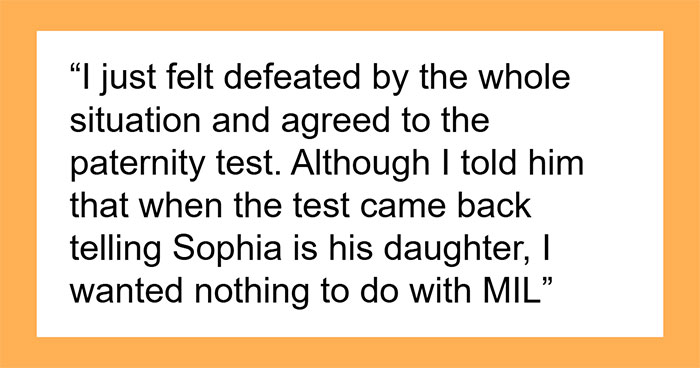Meditation is a means of transforming the mind. Buddhist meditation practices are techniques that encourage and develop concentration, clarity and emotional positivity. By engaging with a particular meditation practice you learn the patterns and habits of your mind. The practice offers a means to cultivate new, more positive ways of being. With regular work and patience these nourishing, focused states of mind can deepen into profoundly peaceful and energised states of mind. Such experiences can have a transformative effect and can lead to a new understanding of life. Beginners of meditation need to be patient and practice daily.
With the hectic pace and demands of modern life, many people feel stressed and over-worked. It often feels like there is just not enough time in the day to get everything done. Our stress and tiredness make us unhappy, impatient and frustrated. It can even affect our health. We are often so busy we feel there is no time to stop and meditate! But meditation actually gives you more time by making your mind calmer and more focused. A simple ten or fifteen minute breathing meditation as explained below can help you to overcome your stress and find some inner peace and balance.
Meditation can also help us to understand our own mind. We can learn how to transform our mind from negative to positive, from disturbed to peaceful, from unhappy to happy. Overcoming negative minds and cultivating constructive thoughts is the purpose of the transforming meditations found in the Buddhist tradition. This is a profound spiritual practice you can enjoy throughout the day, not just while seated in meditation.
Your Brain on Meditation
Meditation has been shown to increase gray matter in the brain — particularly in areas associated with muscle control, sensory perception, memory, emotions and speech. A study conducted by the Laboratory for the Neuroscientific Investigation of Meditation and Mind-Body Medicine at Massachusetts General Hospital found that people who meditated at least 30 minutes a day for eight weeks increased gray matter density in their hippocampus. That is the part of the brain associated with learning and memory.
Regular mindfulness may even slow age-related thinning of the frontal cortex, which means less forgetfulness over the years. It’s also been shown to help reduce distress from chronic pain and depression. The benefits of mindfulness training go beyond the brain, too. Some studies have shown that meditation can reduce the chance of a heart attack and give you great health benefits.
The Happiness Factor
There are also many ways meditation improves quality of life that can’t be as objectively tested. Though there is yet to be a happiness barometer, anecdotal evidence suggests meditation can impact how you approach life, how you react to things, and how you interact with others. In some cases, it can allow you to see things more clearly (including yourself), fill you with a sense of calm, and help you to better deal with the variegated demands of the modern world. “In the Buddhist tradition, this is referred to as equanimity,” says Lazar. “It is about not expecting anything to be a certain way and not trying to hold on to ‘happy’ moments. It is about acceptance of life as it is.”
Mindful meditation, also called vipassana, is the heart of Buddhist meditation and the most widely practiced form in Southeast Asia. It emphasizes mindfulness and develops an awareness that is carried into every aspect of your daily experience. Some refer to it as “the art of living” — awakening from autopilot, discovering the true self, being present, and finding the capacity to live more wisely, more lovingly and more fully.
Just Breathe
For beginners of practicing mindful meditation, find a quiet room with few sensory distractions. Set a timer for five minutes (or 10, or 15 — it doesn’t matter) and sit comfortably on the floor or in a chair. Buddhist monk and meditation teacher Jack Kornfield says to “sit with the quiet dignity of a king or queen.” Just remember, keep the body upright, but not uptight. Rest your hands on your knees, relax the shoulders, open the chest and soften the belly.
Then close your eyes and connect with your breath by focusing on your breathing without trying to direct it; just pay attention to its natural movement. Your breath is your anchor to the present moment and will guide you back when your mind wanders off in thought.
To help, the Zen Mountain Monastery suggests that beginners count their breaths. Count one breath in, one breath out, and continue through 10 breaths, then return to one again. This process helps connect your mind to your breath, especially when thoughts can sometimes break your concentration. Every time your thoughts wander, start back at one. Eventually, you’ll be able to just follow your breath without counting.
There are many different ways to practice meditation. You could sit, lie down, or even walk. You could watch the flicker of a candle flame, or chant the popular mantra, “om.” Experiment until you find what suits you. In the beginning, it could be useful to follow a guided audio meditation or read a book.
What to Expect
During your beginners meditation, you may experience feelings of frustration, boredom, fear, anxiety, pain or anger — this is all normal. Acknowledge them, and then let them go. You may get caught up in expectations of what your experience should be, or doubt that you’re “doing it right.” When your timer goes off, you can slowly open your eyes and resume your day. Like a fish returned to water, you may notice that things flow more easily.
Beyond Breathing
You’ll begin to become aware of the state of your body — the tensions it carries, its energy, its pain — and sensations that your busy life may have kept you from noticing previously. In the same way you’ve focused attention on your breath, you’ll be able to gently move that focus to this tension and release it. Eventually, you’ll be able to do the same with recurring feelings and emotions. Be focused on your practice and remember to breathe. Release anything that’s keeping you down with breathing correctly.
You may want to try loving kindness meditation as a compliment to your practice. This form uses phrases of friendliness to evoke genuine feelings of love and compassion toward yourself, your loved ones, strangers and even your enemies.
The Daily Beginners Mind
If you’re a beginner, it is important to practice every day. Your body and your mind will be thankful for it. If you are able to make meditation a part of your daily routine, you’re on a good spiritual path. You can practice for 15 minutes or you can practice hours. It all depends on your personal preference.
Although it might sound easy, meditation is in fact hard work and it takes a lot of practice to get better. But just like training for a marathon or playing an instrument, the more you do it, the easier it becomes. And just think, in as little as two minutes, a happier outlook can be yours for the taking.
How to meditate for beginners
Many beginners of meditation often experience a lot of noise in their head, making it hard for them to clear and calm their mind. This experience is very common and is not too hard to fix. Meditation is about relaxing the mind, focusing on the breath, and becoming a conscious observer of the breathing cycle as each breath gently flows in and out of the body to achieve a deeply relaxed state.
If you are new to meditation or are having a hard time meditating, the meditation tips for beginners below will help you clear your mind, making it easier for you to achieve a deeply relaxed state of mind.
Meditation tips for beginners #1: Scan your body
Your mind is always thinking and being distracted by all sorts of messages, so clearing and relaxing your mind can be a huge challenge. One trick to shed the mental side-talk is to scan your body in unison with your breath.
Start by focusing your attention on your toes and silently telling them to relax. Then, repeat this process until you have scanned every part of your body from your legs and abdomen to your fingers, arms, heart, and head. By the time you get through giving attention to your entire body, you will be surprised to find how relaxed you are.
Meditation tips for beginners #2: Mantras
The word “mantra” derives from two root words in Sankrit, “man” which means “mind” and “tra” which means “instrument.” A mantra then is when someone creates some type of repetitive sound or vibration, either with their own voice or an instrument to sooth and calm their mind.
Most people are familiar with the word “om” which is often used as a mantra. But there are many others too. The key is to repeat the sound or word over and over and feel its vibration and sound course through your body.
Meditation tips for beginners #3: Peaceful music
The vibration and sound of peaceful music can help relax your mind, making it easier for you to achieve a meditative state. The trick is to select music that is soothing and dreamy and preferably something without words. If you prefer having words in the peaceful music, words with soft and soothing tones are recommended.
Also, the volume should be low enough that it is not all-consuming but more in the backdrop of things. Furthermore, make sure that the music does not end or change significantly while you are still meditating.
Meditation tips for beginners #4: Imagery
When you see or think of an alarming image, your body is flooded with the stress hormone, cortisol, and becomes alert and on edge. The flip side of this phenomenon is that by focusing on calming and peaceful images, your body can tap into your inner stillness, thereby setting you up for relaxation and meditation. These types of images are very powerful for harmonizing the energy of the mind and body.
Practice makes perfect when it comes to meditation, so the more you do it, the more it will become easier to transition into a meditative state of awareness. Also, try to meditate on a regular basis so that your body becomes use to it. One thing you should always do before meditating is to make sure you are comfortable. If you are not comfortable, you are making it much harder to relax your mind to a state of inner peace.
Meditation tips for beginners #5: Focus your awareness on your brain and heart
When most people meditate, they tend to only focus their awareness towards their brains. When people do that, they are missing a very important element of the meditation process. Besides your brain, your heart is also very important for helping you to achieve a state of inner peace.
One of the most effective methods for helping you to achieve a state of mindfulness is by focusing your awareness on your brain first. After that, slow the activities of your brain by relaxing your mind and clearing it of distracting thoughts. Once you have achieved this, bring your awareness down to your heart and relax your heart, so that your brain and heart are working in unison. Focusing your awareness on a specific part of your body for a few minutes or longer can be hard sometimes. If you find out that you are having a hard time focusing your awareness, use these 5 techniques to help strengthen your spiritual awareness.
Contemporary researchers are now exploring whether consistent meditation practice yields long-term benefits, and noting positive effects on brain and immune function among meditators. Yet it is worth repeating that the purpose of meditation is not to achieve benefits. To put it as an Eastern philosopher might say, the goal of meditation is no goal. It is simply to be present.
In Buddhist philosophy, the ultimate benefit of meditation is liberation of the mind from attachment to things it cannot control, such as external circumstances or strong internal emotions. The liberated, or “enlightened,” practitioner no longer needlessly follows desires or clings to experiences, but instead maintains a calmness of mind and sense of inner balance.
More info: state-of-reiki.com

242views
Share on Facebook
 Dark Mode
Dark Mode 

 No fees, cancel anytime
No fees, cancel anytime 

























7
0